Fred Morgan Kirby
Philanthropist and Five and Ten Pioneer (1861-1940)
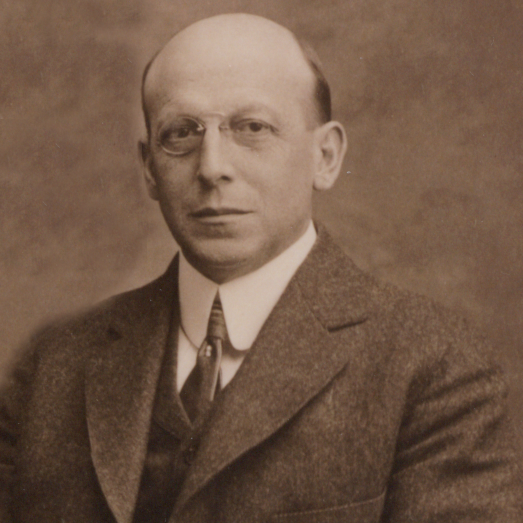
Fred Morgan Kirby was born in Brownsville in East Brooklyn, New York City on October 30th, 1861. His father was a farmer and carpenter. At the age of 15 he became an apprentice at the Moore and Smith Dry Goods Store at American Corner in Watertown, New York. One of his co-workers was Frank Woolworth, who looked after the stockroom and the displays in-store.
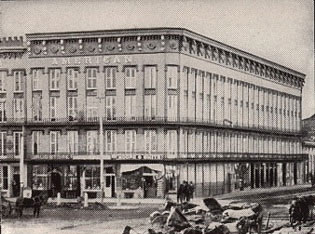
Kirby was serving customers on the day that his boss William Moore got Frank set up a fixed price five cent table at the back of the store. Trade had been weak and the move aimed to turn excess stock in to cash. The bright red feature proved a hit with local shoppers, who flocked to the table to inspect the housewares under the large, carefully crafted sign that young Frank had prepared. It read 'Any article on this counter 5¢'. In the months that followed the store's fortunes had rallied, keeping Kirby busy registering sales and wrapping the goods. The young clerk later helped Moore set up a new wholesale operation, which sold assorted 5¢ lines in bulk to other merchants.
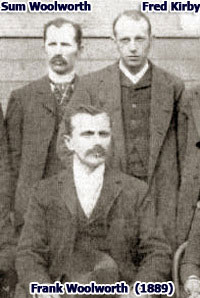
A second Woolworth joined the team in Watertown in 1877, as Frank's younger brother Sum (Charles Sumner Woolworth) became an apprentice. Kirby and Woolworth Jr. got on well and remained close friends for the next sixty years. During 1878 the Woolworths speculated with Kirby about whether a store could prosper selling just 5¢ items. Not long after Frank decided to give it a go, securing a loan of stock from William Moore and seeking his fortune in Utica, New York before switching to Lancaster, Pennsylvania. Days after the opening in Lancaster, Frank invited his brother to manage a new, second outlet in nearby Harrisburg. Kirby was keen to join them, but his parents wanted their son wait until he was twenty-one.
The departure of the Woolworths from Watertown opened an opportunity for Kirby. He took over Moore's wholesale operation, which made him quartermaster to the 'Great Five Cent Stores' as well as helping to broaden his knowledge of the supply lines and merchandise mix.
As Kirby's canny Scottish parents had predicted, it took the brothers five years to perfect the formula. Frank opened stores in new places and then closed again, only occasionally finding a location to rival Lancaster. Sum settled on Scranton, Pennsylvania, which he built up. Good sales and tight controls allowed him to buy out his brother's half share in two stages.
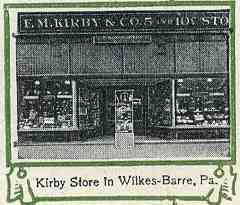
Kirby maintained a regular dialogue with Sum Woolworth. By 1884 Sum was ready to open a second outlet. He persuaded Kirby to take an half interest at Wilkes-Barre, Pennsylvania. Each man put up $600. Woolworth reinvested profits from his Scranton store, while Kirby took a $100 loan from this father to boost his savings.
The 'Kirby and Woolworth 5 & 10¢ Store' opened it doors at 172 East Market Street, Wilkes-Barre on 10 September 1884. Early sales were poor. Sum might have written the venture off, but Kirby needed to see a return on his investment and insisted on bravng it out. His patience paid off. By 1887 he had made enough profit to buy out his partner.
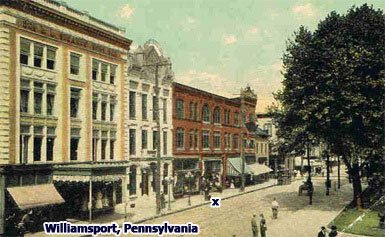
The following year, in preparation for further expansion, Kirby hired his father as a partner. The Wilkes-Barre store moved to a higher traffic spot on the corner of Market and Washington Street, with Kirby senior at the helm. Fred searched for new locations further afield, selecting Pine Street, Williamsport, Pennsylvania about sixty miles away for his second outlet. It opened in 1888 and became an instant hit.
Kirby had found his repeatable formula more quickly than the Woolworth brothers. His 5 & 10¢ stocked many of the same products, but his early stores had a distinctive look that set them apart.
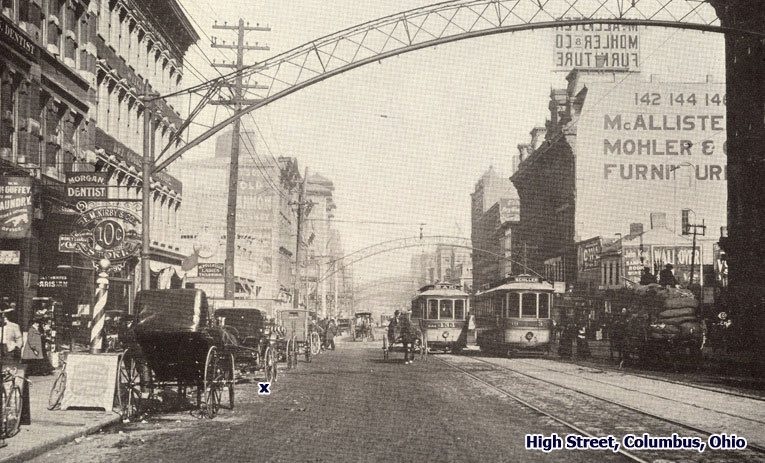
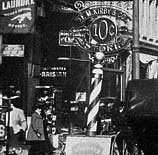 After Williamsport he started to expand rapidly. Initially, like the others, Fred targeted towns close to home. The friendly rivals had a policy of not opening stores in direct competition with each other, which meant that before long most of the best towns in Pennsylvania, New York State, Ohio and New Jersey were off limits. Kirby had to strike out further afield. To make this possible he started to adapt his organisation, creating a management training programme and preparing for mass openings.
After Williamsport he started to expand rapidly. Initially, like the others, Fred targeted towns close to home. The friendly rivals had a policy of not opening stores in direct competition with each other, which meant that before long most of the best towns in Pennsylvania, New York State, Ohio and New Jersey were off limits. Kirby had to strike out further afield. To make this possible he started to adapt his organisation, creating a management training programme and preparing for mass openings.
With the foundations built, he pushed south into Virginia and the Carolinas, and west into Indiana, Illinois and Kentucky. By 1896 there were 32 Kirby 5 & 10¢s, and the Founder needed a Deputy. He chose Frederick Jacob Weckesser from his opening team to become Buyer and Confidential Assistant.
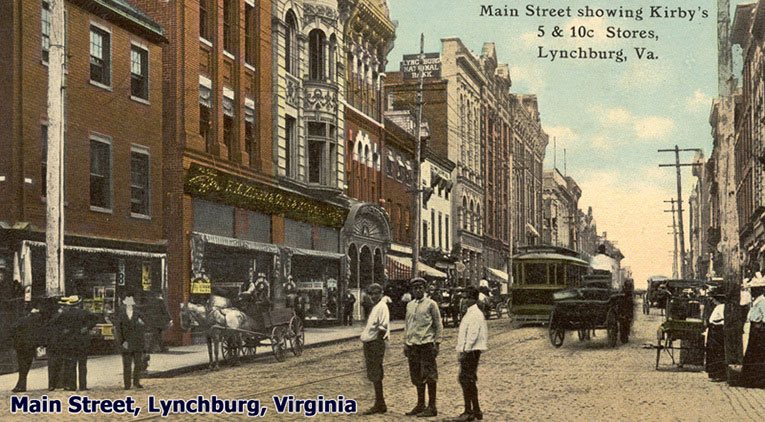
Most Kirby stores were comparatively small. Fred generally opted for narrow-fronted buildings. His signature style had deep bay windows with a mini-fascia stripe all the way across, a little above eye level. He insisted that where the store had two windows on either side of the main entrance door, these must complement each other but show strikingly different items to illustrate the breadth of range available.
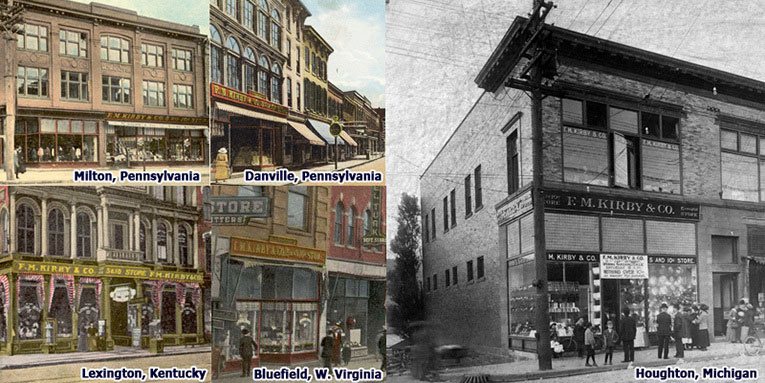
Despite sometimes appearing rather solemn, Fred Kirby was a gregarious, friendly man who took an active interest in his staff. He visited his stores regularly and was well regarded by the clerks as well as local managers. Wages for salespeople were low, but the stores were warm and offered good fringe benefits, including some tricks that he had learnt from the Woolworth brothers. If an employee worked hard and fell ill, the firm secretly stepped in to pay their medical bills and sick pay. Bonuses were paid at Christmas based on service, meaning that the reward increased the longer an employee stayed loyal. There were also paid holidays. Alll of this contributed to a strong sense of belonging, despite the vast distance between the furthest flung stores and the headquarters in Wilkes-Barre.
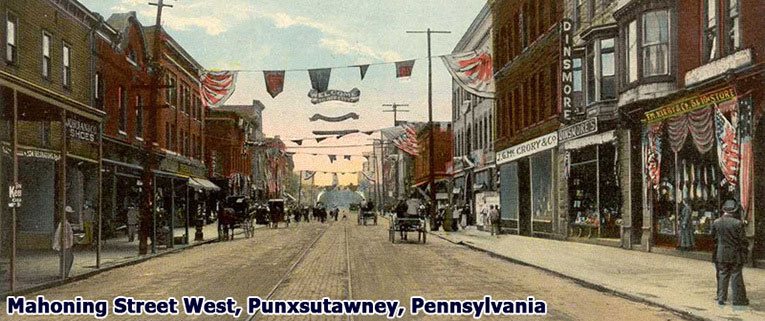
In the 1900s the Woolworth Syndicate was substantially the largest five-and-ten, but was no monopoly. Both Frank Woolworth and Fred Kirby found their stores targeted by competitors, who would often open up shop right next door with a rival selection of broadly similar goods. Woolworth was quick to produce a veritable arsenal of defensive weapons, including brightly coloured bunting, price cuts and special merchandise just for the branches with the toughest competition. Fred followed suit, responding strongly to incursions by McCrory, S.S. Kresge and N.M. Rothschild. One competitor who much later became a thorn in the side of the F. W. Woolworth Co., S.H. Kress, was introduced to the Five-and-Ten idea by Fred Kirby while managing a neighbouring stationers in Wilkes-Barre. He never competed with his friend. Whatever the day-to-day frustrations, overall Kirby seemed to endorse Frank Woolworth's assessment that the best neighbour to have was a rival dimestore, allowing the Syndicate's 'superior values' to shine through.
The Syndicate Members considered another threat more sinister. Between 1900 and 1905 some journalists postulated that the competitors who were not 'friendly rivals' might join forces. Collectively the non-Syndicate five-and-tens might be large enough to launch a hostile bid, if the speculation was to be believed. As a result Kirby followed Frank Woolworth's lead and incorporated his chain in 1906, moving from being the outright owner to an employee of a company limited by guarantee. Shares were sold to friends, family and employees only, and were divided evenly between preference shares with a guaranteed 7% return and dividend-paying ordinary shares.
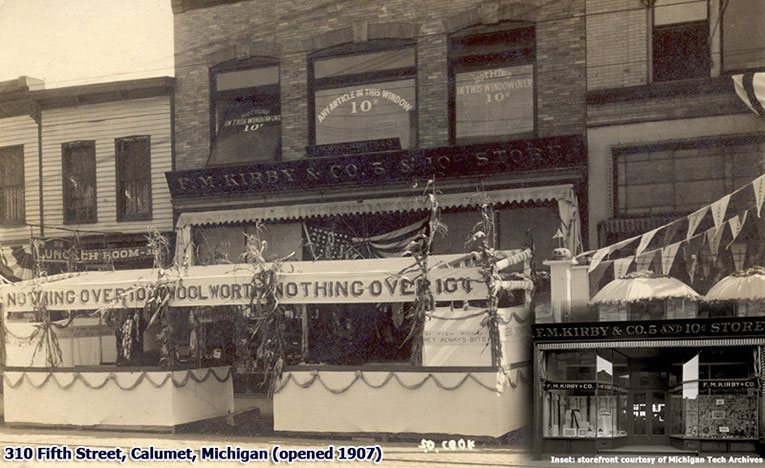
Sales and profits at F. M. Kirby & Co. grew rapidly after the chain's incorporation, as the pace of store openings accelerated. Some of these were closer to home base in Pennsylvania, with a few in newer towns neigbouring branches of the other friendly rivals. But the chain also embarked on its most ambitious opening to date, planning a huge store on Canal Street in New Orleans, Louisiana. Ironically the chain's largest branch happened to be the furthest from its offices in Wilkes-Barre when it opened in 1910. The three floor emporium rocketed to the top of the sales league table. The Canal Street location became an iconic variety store for more than seventy years. It remains one of the most fondly remembered of all the Five-and-Tens. Disaster struck in 1969 when the landmark burnt to the ground. It was rebuilt as a modern, bulk standard Seventies Woolworth's and remained a top-performer. In later years it was famous for serving warm bread like no other store and having a 'must visit' soda fountain. The New Orleans store closed as Woolworths contracted in the 1990s, the last and some would say finest of a dying breed.
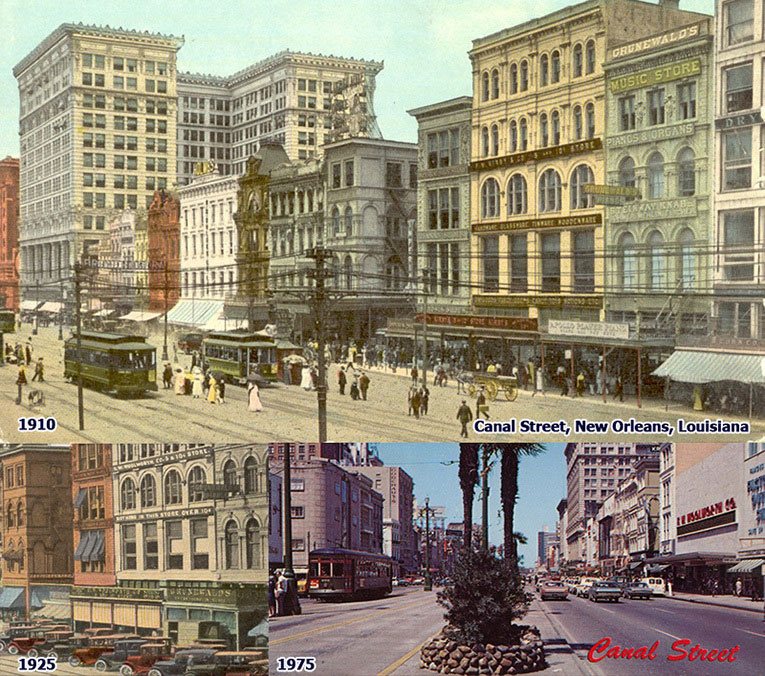
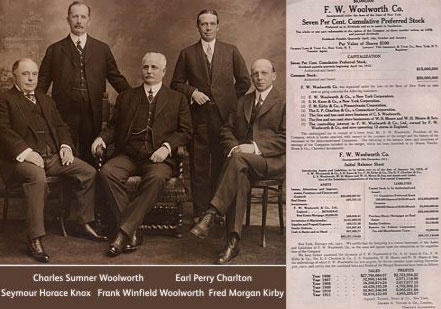
By 1911 F.M. Kirby & Co. Ltd. had grown to ninety-six outlets. Major celebrations were planned for the hundredth link in the chain.
But Frank Woolworth had other ideas. He proposed a mega-merger in which the friendly rivals would join forces to form a huge stockmarket-listed corporation. He argued that each of the Founders would be able to turn their hard work into cash, and that the new firm would be much less vulnerable to takeover.
The idea had appeal, particularly when Goldman Sachs suggested a valuation of $50m; but it also had a downside. Frank insisted it must be called F. W. Woolworth Co, and must be managed from New York City.
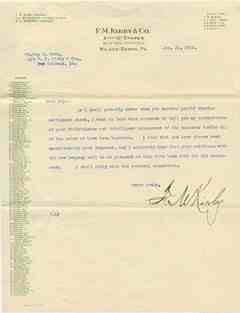
After several months of covert meetings, a deal was agreed. It was announced that the Friendly Rivals would merge with effect from January 1912. Demand outpaced supply as shares in the new Woolworth's brought in $65m, ahead of all expectations.
Behind the scenes Kirby had driven a hard bargain before agreeing to the consolidation. He knew that Woolworth needed his stores to make a truly national corporation. He appeared less concerned about his personal share of the bounty and more anxious for his people. He secured an assurance that no executive, manager or clerk would be compulsorily moved or would lose their job. Woolworth's would open a District Office in Wilkes-Barre, controlling a large group of stores.
Kirby received $9m cash for his stores, as well as a big holding of Woolworth stock. He became a Founder Director and SVP with a guaranteed annual salary of $10k for life. He accepted with a heavy heart. He wrote individually to each of his people, thanking them for their service and wishing them well for the future. He was proud that Kirby's had been based on friendship and trust, and confident that all would enjoy a great future.
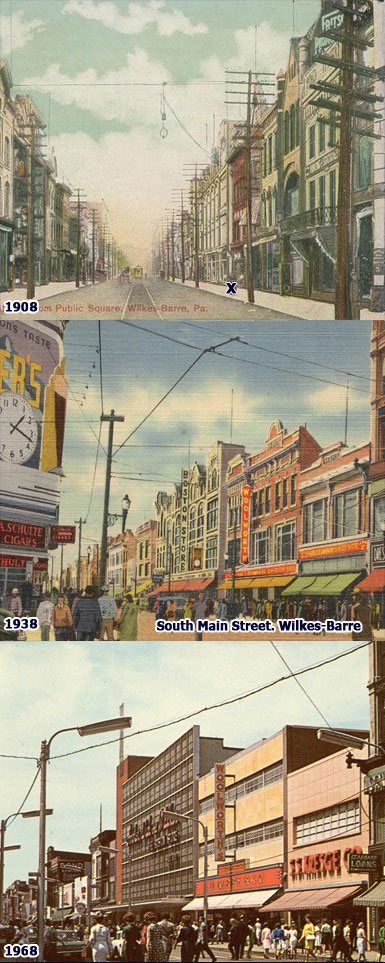
After the merger Kirby served on the Board of the F. W. Woolworth Co. for twenty-six years, before retiring in 1938. His guidance helped the Corporation to fulfil the promises made its launch, maintaining strong dividends and expanding to become the largest chainstore in the world. Sum Woolworth, who became Chairman of the Board after his brother's death in 1919, relied on Kirby's counsel and friendship.
At the time of Kirby's retirement Woolworth had survived the traumas of a World War and the Great Depression and had transformed from Five-and-Ten chain to become a modern and resurgent variety store.
The Kirby 'ground zero' in Wilkes-Barre, which had relocated to larger premises in South Main Street in 1908, remained a revered location until 1993. It traded under an F.M. Kirby & Co. fascia for all of that time. Sadly latter day Executives failed to keep pace with changes in the market. Their first Woolco store in Columbus Ohio, which opened in 1963, failed to emulate the success of Fred's original dimestore of 1894. Executives persevered with the new venture, expanding to over a hundred stores despite poor results. This drained resources and diverted attention from the Main Street outlets.
Besides his service to F. W. Woolworth, Kirby proved a canny investor and entrepreneur on the wider stage. He revitalised major railroad companies and served on the Boards of several big-name banks.
The name F.M. Kirby still commands respect and admiration in Wilkes-Barre and across Pennsylvania today as a philanthropist who played an active part in community affairs. He shared much of his new-found wealth, endowing hospitals, schools and centres for the performing arts. His son and grandson have built on the bequests through a family trust in parallel with successful careers of their own.
Fred Morgan Kirby died in Wilkes-Barre on 16 October 1940. During a career spanning seven decades he had proved that it was possible to make a great deal of money by selling simple things cheaply. He walked the talk, maintaining cordial labour relations despite a strict regime in-store. He took time to meet and greet customers and to listen to ideas and suggestions from the floor.
Kirby changed the face of American retailing for the better, inspiring a generation of shopkeepers and leaving a lasting legacy of good works which continue to inspire in the twenty-first century. We are proud to celebrate one of the true Woolworth greats here in the Woolworths Museum.
Shortcuts to related content
1900s Gallery
US Expansion:
Founder Biographies
UK beginnings
Financing and setting up the Company
Join us on opening day in Liverpool
Museum Navigation